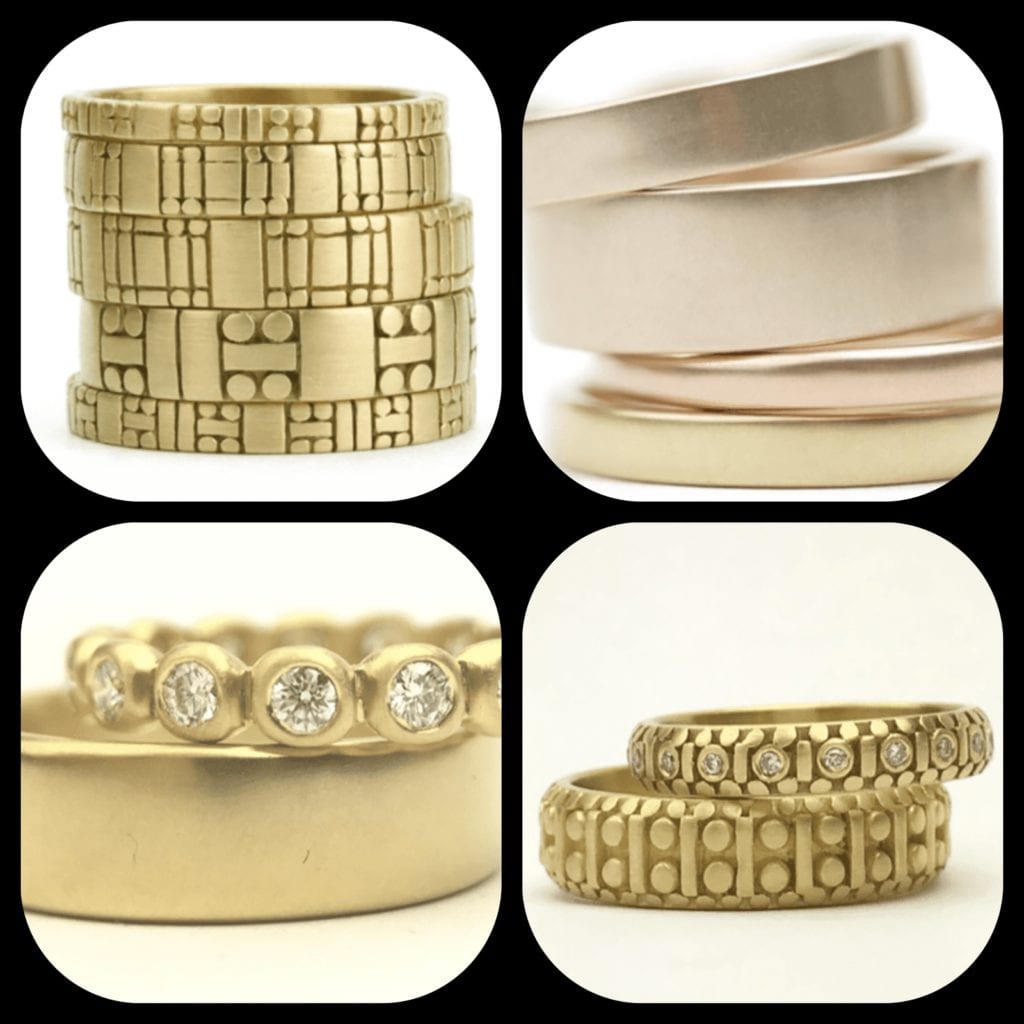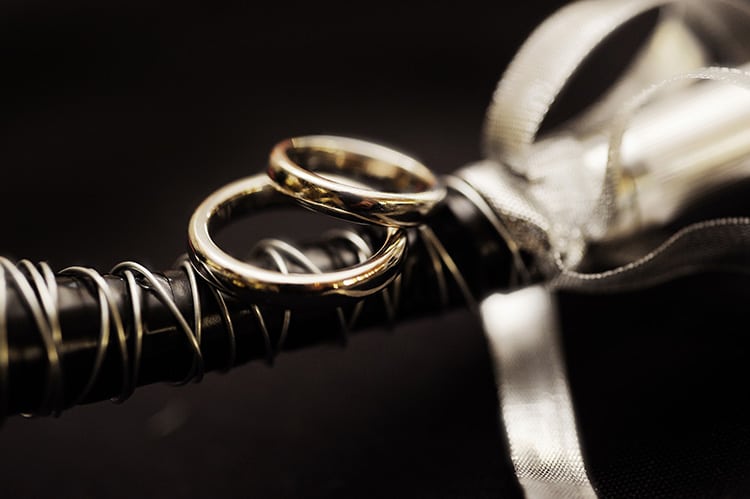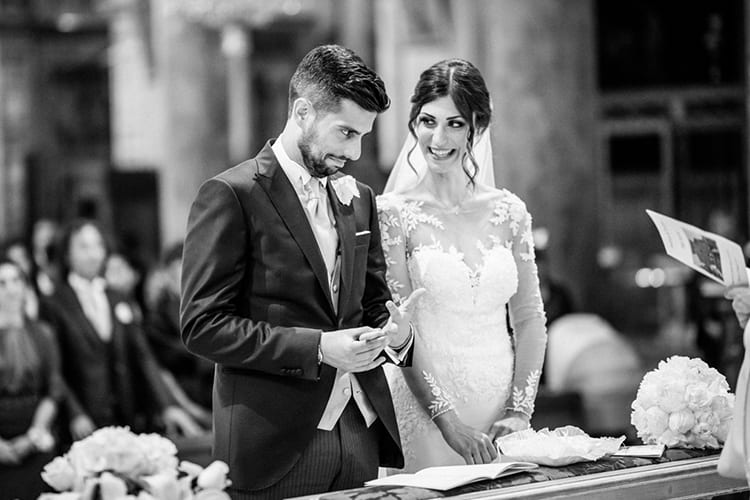
Your wedding band is one element of a wedding that will last a lifetime. Theoretically, it will always be on your hand (with some exceptions, of course) , symbolizing your bond with your wife. You’ll probably never have as long a relationship with a piece of jewelry as you will with this, so make sure you pick the right material. You’ll have a little more latitude with the wedding band than you did with the engagement ring, so consider all your options before making a purchase.
Remember: even though you’ll be the one wearing it, your wedding band is not a solo art piece. You need to make sure you and your bride are on the same page when it comes to material and design. Don’t get something that you’re both not 1000% on board with or it’ll just be a thorn in the other person’s side every time they see it on your finger.
Read on as we break down the most common wedding band materials, and examine their pros and cons.
The Gold Standard: Yellow Gold
Yellow gold is the most traditional wedding band option. It’s steeped in history, and most of your relatives likely had a gold band. Old songs like “Band of Gold” were written around the symbolism of this ring style. Gold comes in a variety of strengths, and carats, and while it can tarnish faster than other materials, its general warmth and wide range of prices makes it the favorite.
The Romantic Look: Rose Gold
The warmer hue of rose or pink gold adds a luster that heightens the romantic effect of the ring. Like yellow gold, rose gold rings come in a range of hardness, durability, and carat values, meaning it can offer a wide array of possibilities for any price range.
The Cool Contender: White Gold
White gold is perfect for those who don’t need the traditional yellow gold warmth but still want gold’s range of options in pricing and density. It’s light, durable, and doesn’t require too much maintenance to keep its beautiful finish. White gold also reflects stones layered into the metal quite well, if that is an option you want to consider.
The Top-Line Ice: Platinum
Platinum is the most popular ring material these days, and with good reason: it has a more brilliant, lasting shine than other metals, and is far more durable. Platinum rings are more silvery than white gold, and will last a lifetime, but are also the most expensive.
The Modern Reliable: Palladium
The slightly less-than cousin to platinum, palladium rings have been growing in popularity for their durability, white color, and generally low maintenance. They’ll never need to be replated and are closer to gold in terms of price.
The Traditional Classic: Silver
Silver has been used in rings and jewelry-making since the dawn of human history. But while silver may look great the moment you put it on, it starts to tarnish the next moment. Silver bands need to be buffed, shined, and occasionally replated. Nevertheless, they are also fairly cost effective. Many heirloom rings are silver, as some of the other metals hadn’t come into popular use yet. Silver rings are still beautiful and can be an apt symbol of the regular maintenance that every marriage requires. You can remember that every time you look down and think, “Boy, I should clean this thing.” Silver rings can also be plated with Rhodium or other materials to help slow the tarnishing process.
The Tough Nut: Titanium
Titanium is great for those with particularly labor-intensive jobs that might potentially damage more delicate rings. While it lacks the shine of gold and platinum, it’s incredibly durable and will stand up to any element. Platinum may be a British sports car, but titanium is a tough Chevy truck.
The “Alternative” Spectrum: Copper, Bronze, Wood, Carbon Fiber
Some couples may choose a material that is particularly meaningful to them: copper, bronze, wood, or different types of stone. The important thing when looking at alternative materials is to consider how durable they’ll be and how easy to maintain. You don’t want to keep replacing the wood or adding new bronze once it’s gone green.)
Wedding bands come in a wide range of colors and materials. Work with your partner to choose the one that will suit you best.
















